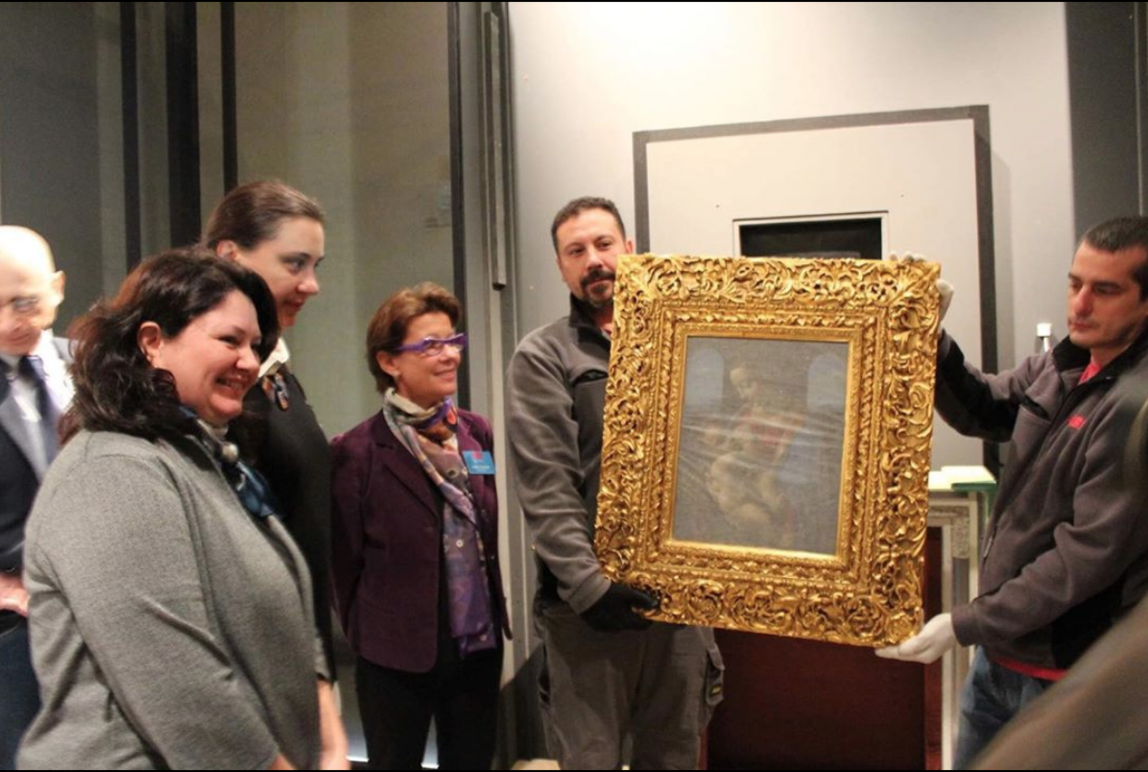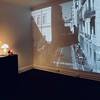A Closer Look Inside Da Vinci’s Studio
In occasion of “Leonardo and the Madonna Litta,” a new exhibition held at Milan’s Poldi Pezzoli Museum to close the “Year of Leonardo,” five artworks created in the master’s studio were analysed by researchers using new technology to unravel details invisible to the naked eye that can inform on how Leonardo and his studio operated, what their process was, which materials they used, and so on.
The exhibit, curated by Pietro C. Marani and Andrea Di Lorenzo, features 17 selected paintings and drawings belonging to a variety of public and private collections across the world, all created in Leonardo’s Milan workshop, by both the master himself and his most prominent students between 1482 and 1499. Some of the works included are the newly rediscovered Madonna del Fiore (1487-1488) attributed to one of Leonardo’s best students, Giovanni Antonio Boltraffio, as well as the Madonna con Bambino by Francesco Napoletano, and the Bust of the Christ Child by Marco D’Oggiono.
The show is centered around the famed Madonna Litta (ca. 1494), a painting sold to the St. Petersburg State Hermitage Museum in 1865 by Milanese nobleman Antonio Litta. As is often the case with the work of Old Masters such as Leonardo Da Vinci, the authorship of the Madonna Litta is somewhat uncertain and the painting has sometimes been attributed to Leonardo’s studio rather than to the painter himself.
Organizers therefore took the opportunity to have experts from the Institute of molecular bioimaging and physiology (IBFM) conduct in-depth analyses on five works displayed. These analyses were documented and are displayed on multimedia screens throughout the exhibition, giving viewers the opportunity to learn about the research process that goes into the attribuition of artworks.
The data gathered also allows us to learn more about what it was like to work in one of the Renaissance’s most famous studios, to discover the backstage procedures that went into the creation of Leonardo’s masterpieces.
Isabella Castiglioni of IBFM explains the different levels of analyses conducted. “We used optical techniques to examine the painting surfaces and spectroscopic techniques to study materials such as varnishes and binding substances,” she says. “Then we went deeper using reflectography, which allows us to see the preparatory drawing, and radiography, which reveals the preparation of the background, the support, the canvas, and the wooden boards.”
The results allowed researchers to determine the painters’ color palettes, which shared many commonalities and uncover traces of ocre, azzurrite, and even precious materials such as lapis lazuli and gold in the color pigments they used.
They also uncovered traces of “pentimenti” in underlying preparatory drawings - mid-process changes, corrections such as modified facial expressions, covered up windows, etc - which give insight into the artists’ creative practices, into their minds.
All of this sheds some light into the dynamics that took place in the studio, it brings us inside of it. For instance, as Pietro Marani, a docent at Milan’s Politechinic Institute explains, we know that the master used to work on the preparatory drawings and then pass them on to his assistants who would create the actual paintings, which he would then adjust and correct, giving them his final touch.
Learning about these procedures really takes us into the history of artworks and their makers. It’s something that continues to fascinate most of us. Just think of all the books, films, documentaries dedicated to exploring the work and life of history’s great artists.
Everyone loves a little behind the scenes action and this exhibition, which will run through February 10, 2020, provides just that, on multiple levels.









































i-Italy
Facebook
Google+
This work may not be reproduced, in whole or in part, without prior written permission.
Questo lavoro non può essere riprodotto, in tutto o in parte, senza permesso scritto.